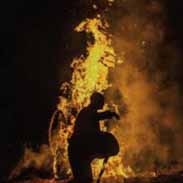CH 10 Families Kinship and Descent – Flashcards
Unlock all answers in this set
Unlock answersquestion
Consists of married couple and their children, normally living together in the same household, members take precedence over relations with other kin. Especially important in foraging and industrial societies. Widespread but not universal.
answer
Nuclear Family
question
The family in which one is born and grows up. Nuclear family in which one is born and grows up.
answer
Family of orientation
question
Nuclear family established when on marries and has children.
answer
Family of procreation
question
Couple established new residence Married couples live hundreds of miles away from parents. Families of procreation, most prevalent residence pattern in US
answer
Neolocality
question
Family household that includes three or more generations. More frequently among poor families who pool their resources together in dealing with poverty.
answer
Extended family household
question
Unilinieal descent group based on demonstrated descent
answer
Lineage
question
Descents group that class common descent from an apical ancestor but cannot demonstrate it. Members claim connection to an apical ancestor (totem pole), use stipulated descent, typically practice a preindustrial farming agriculture.
answer
Clan
question
Group based on belief in shared ancestry Permanent anD endure units. To endure _____ needs to keep some members at home. Establish rules about who belongs to the group and where they should live with the wife's family. Last for generations. Manage and share a common estate.
answer
Descent Groups
question
How people in society reckon their kin relationships. (how people identify and designate their relatives)
answer
Kinship calculation
question
The position from which one views an egocentric genealogy. Social construction of kinship
answer
Ego
question
Ego's direct ancestors and descendants. One's parents, grandparents, etc
answer
Lineal relative
question
All other kin. Relative outside ego's direct line, (i.e. B, Z, FB, MZ)
answer
Collateral relatives
question
Relatives by Marriage, person's in laws
answer
Affinals
question
Four parental kin terms: M,F, FB=MB, and MZ=FZ. Most important group based in Kinship
answer
Lineal Kinship terminology
question
Matrilineal or patrilineal decent
answer
Unilineal descent
question
Flexible descent rule, neither patrilineal nor matrilineal. People can choose the descent group they join.
answer
Ambilineal
question
Kine ties calculated equally through men and women
answer
Bilateral kinship calculation
question
One based on correlation or co-ocurrence of social variables. Attempt to relate particular customs to other feature in society such as rules of descent and postmarital residence
answer
Functional explanation
question
Splits the mother's side and the father's side, also merges same-sex siblings of each parent. Lineal and Collateral relatives ar merged. Typically found in societies in which the ambilineal descent group is the most important kin group.
answer
Bifurcate merging terminology
question
Just two parental kin terms: M=MZ=FZ and F=FB=MB Found in societies with a variety of economic systems
answer
Generation kinship terminology
question
Six separate parental kin terms: M, F, MB, MZ, FB, and FZ. Not as common as other types Commonly found in societies with neolocal postmarital residence rules
answer
Bifurcate collateral kinship terminology
question
Industrial middle class, foraging bands
answer
The nuclear family is the most common kin group in what kinds of societies?
question
TRUE
answer
A family of orientation may be a nuclear family
question
TRUE
answer
In the US, nuclear families accounted for 23% of households in 2005
question
TRUE
answer
A family of procreation may be a nuclear family.
question
TRUE
answer
Most people belong to at least two nuclear families during their lives.
question
People perceive and define kin relations differently in different cultures, although anthropologists have discovered a limited number of patterns in which people classify their kin.
answer
Like Race, kinship is culturally constructed, this means
question
is based on how people perceive similarities and differences in the things being classified
answer
Taxonomic system
question
Household is headed by male household head and wife, matrilineal system, married couples usually live separately, each at the their own tarawad, headed by a senior woman who is assisted by her brother
answer
Features of the Bosnian zadruga
question
23%
answer
What percentage of American families is nuclear?
question
parents, siblings, aunts, uncles, grandparents, cousins, and children.
answer
Typical middle-class Brazilians usually would define their families as including
question
Matrilocal
answer
Under which form of postmarital residence rules systems do couples move to the wife's community?
question
she is responsible for raising her nieces and nephews. her brother will not find out for himself. she doesn't want her brother wasting time on children who may not be his.
answer
Among the Makua of northern Mozambique, a sister takes an interest in her brother's wife's fidelity because
question
FALSE
answer
Most people in North America belong to only one nuclear family during their lives.
question
TRUE
answer
In a Bosnian zadruga, social interaction is more usual among men, women, and children than between spouses or between parents and children.
question
TRUE
answer
Typical contemporary Americans are more involved in their social lives through work, friendship, sports, clubs, religion, or organized social activities than through kinship.
question
TRUE
answer
Clans typically have more members and cover a larger area than lineages do.
question
FALSE
answer
"Affinals" is a term in a lineal kinship terminology system that includes siblings, nieces, and nephews.



